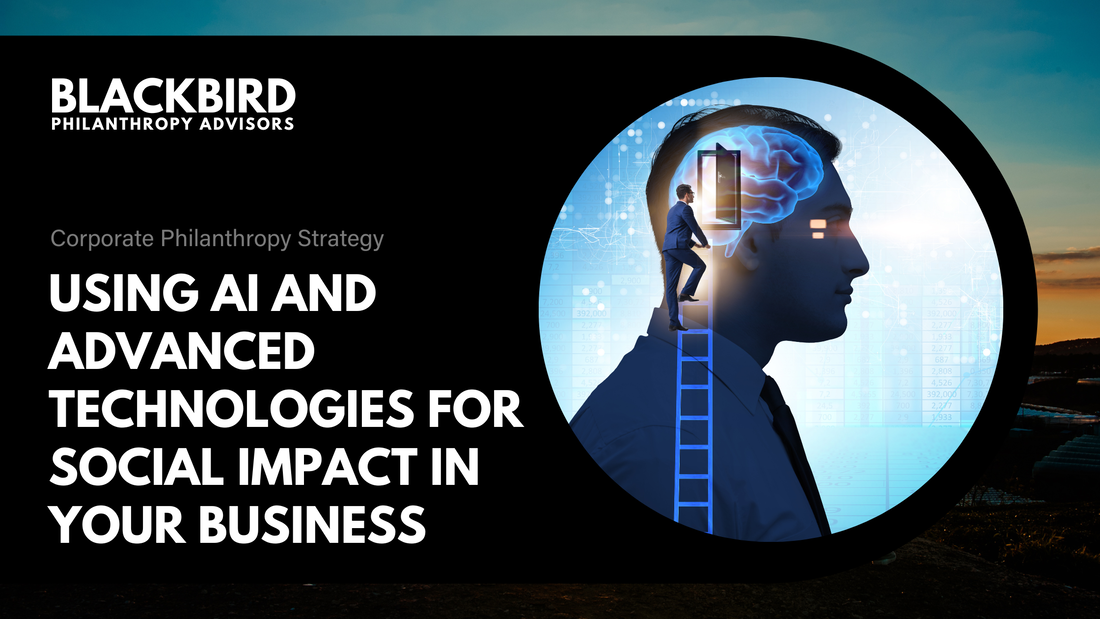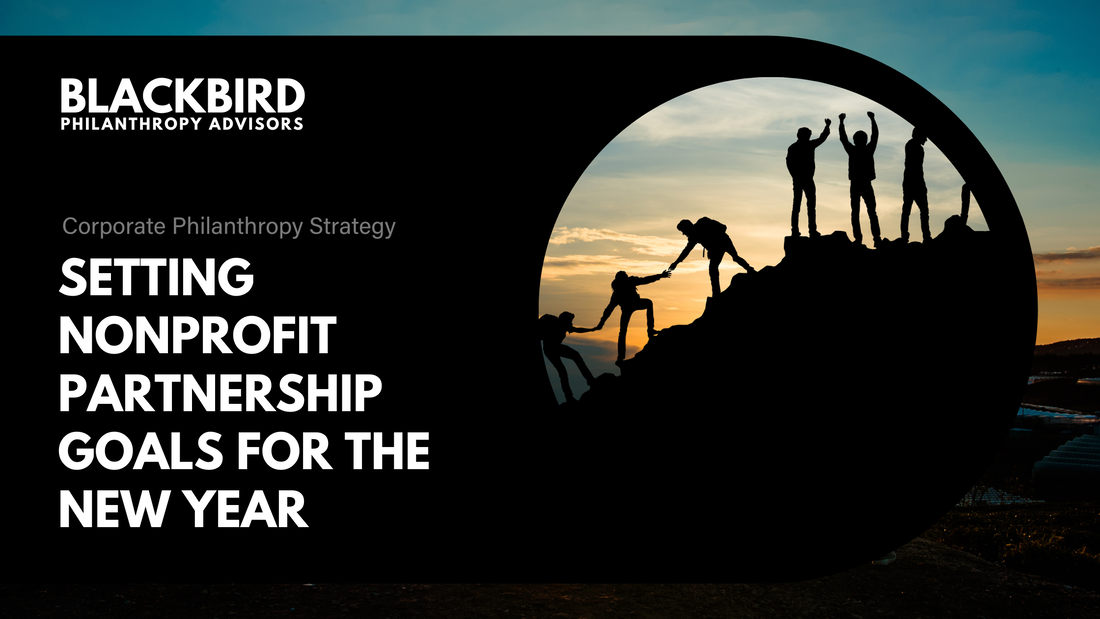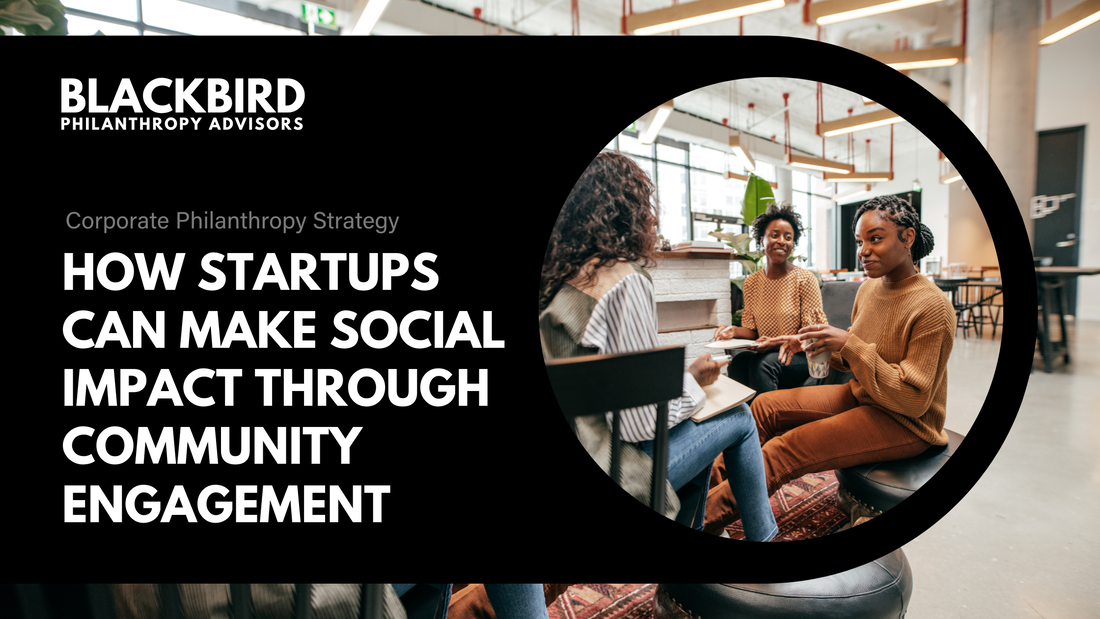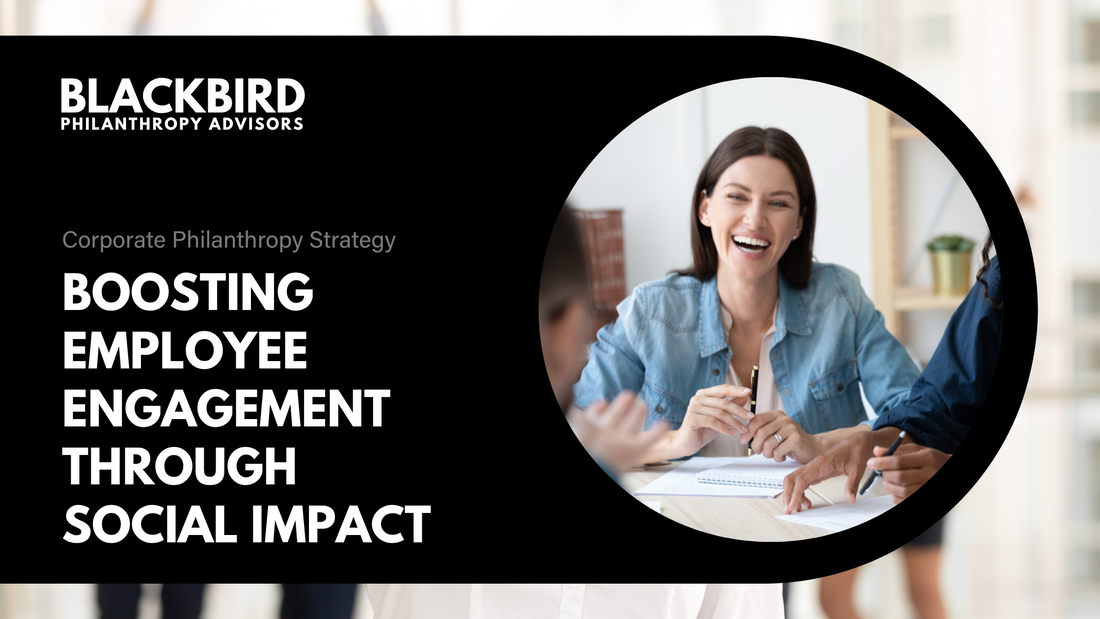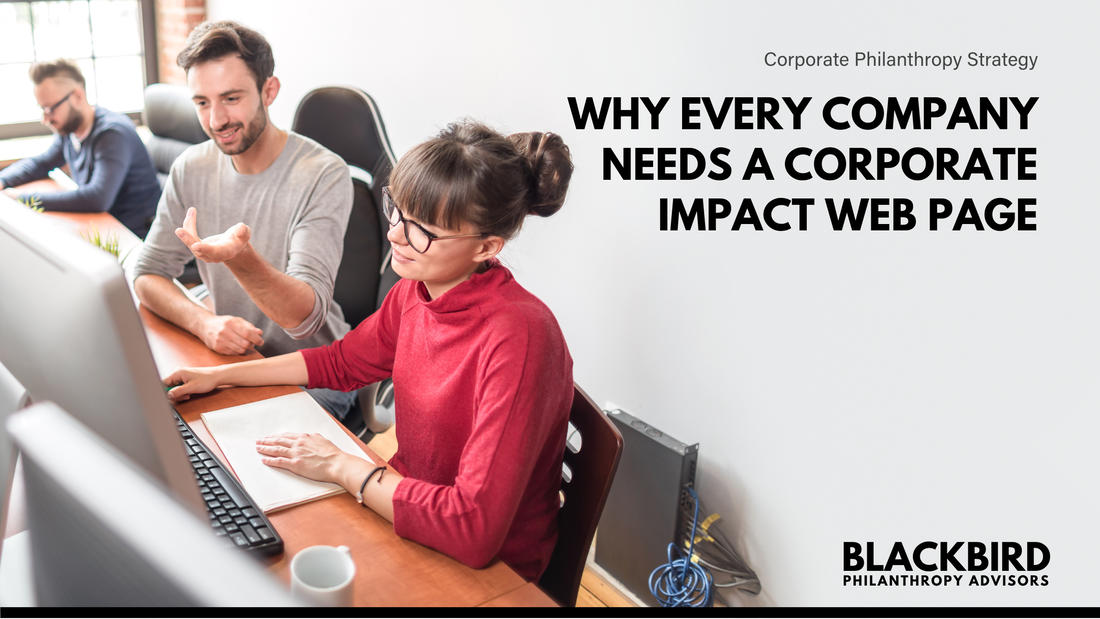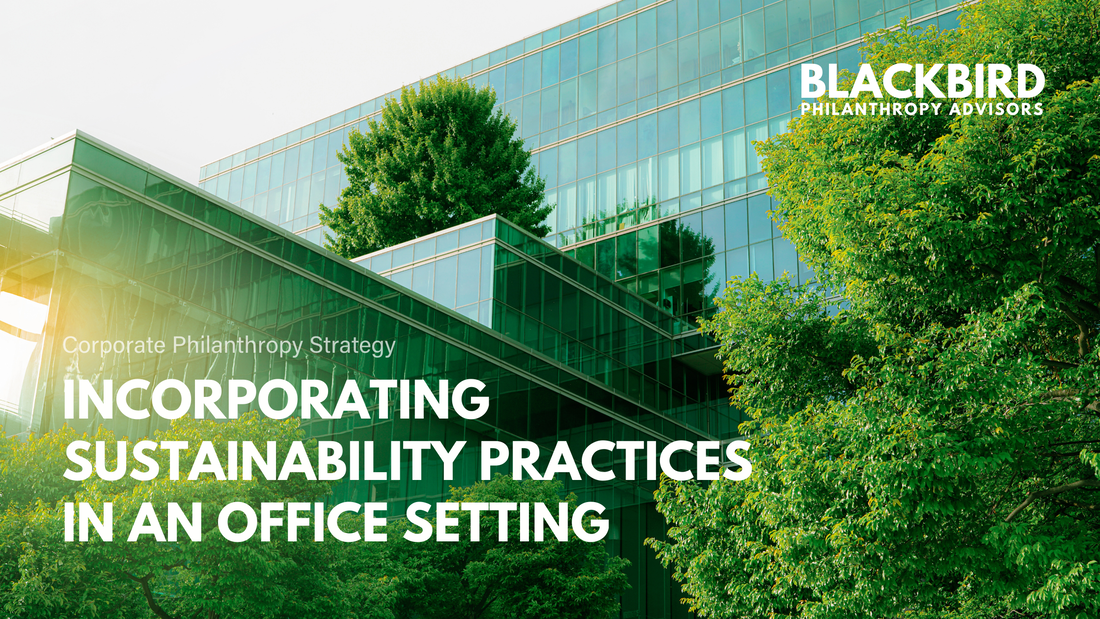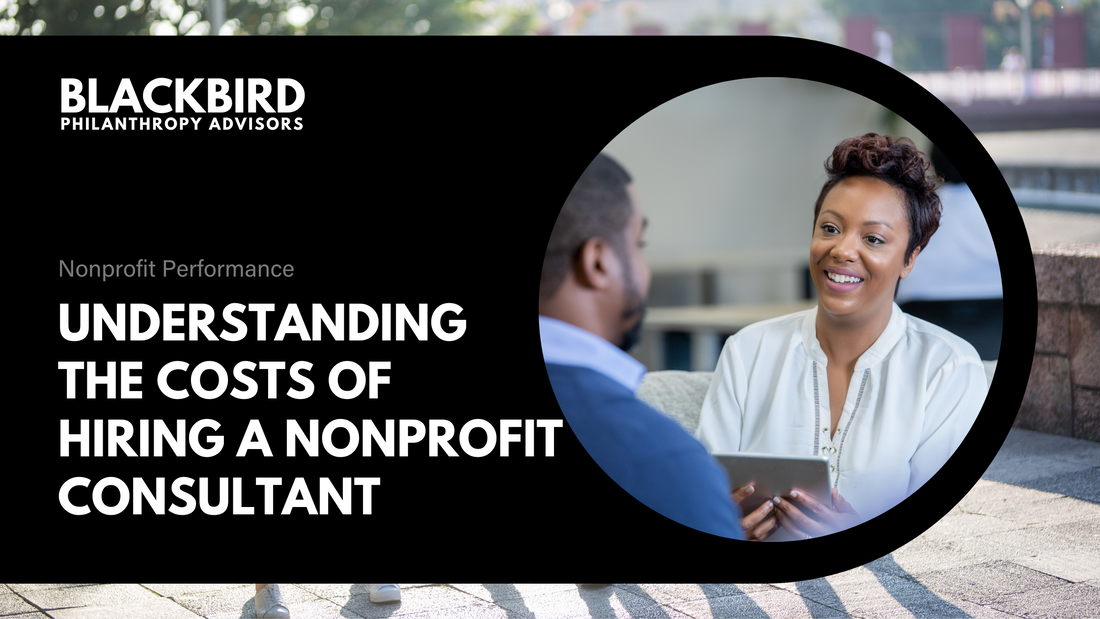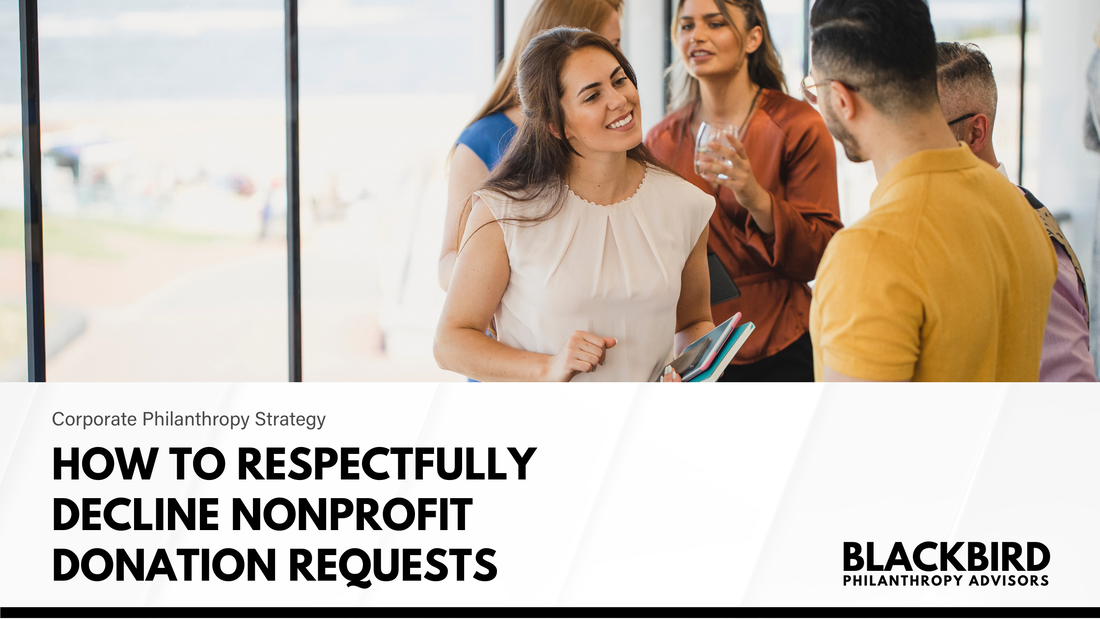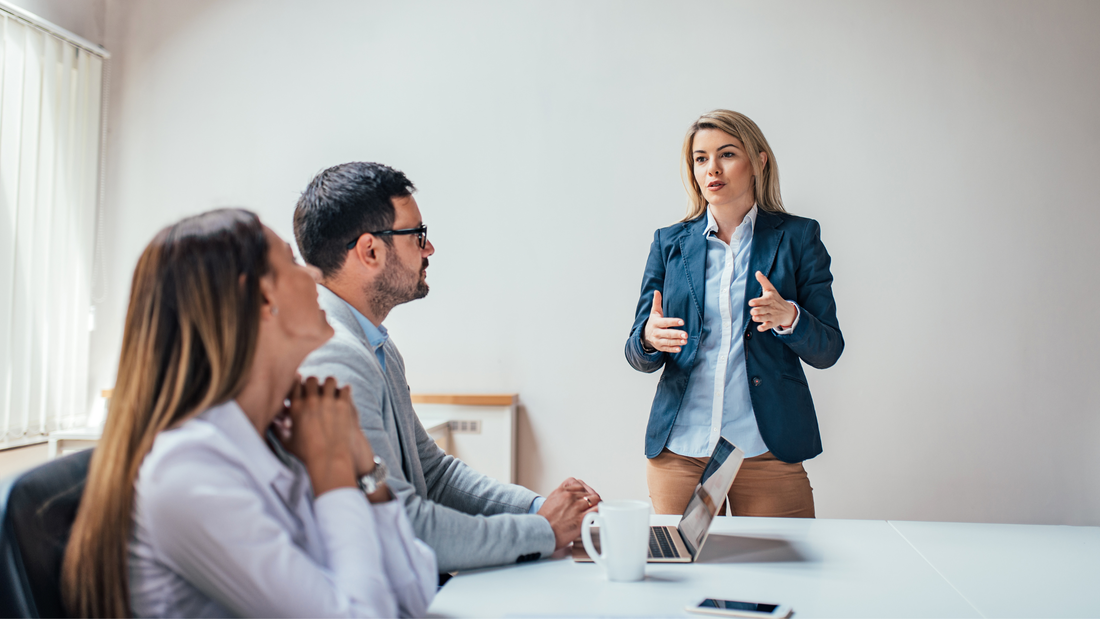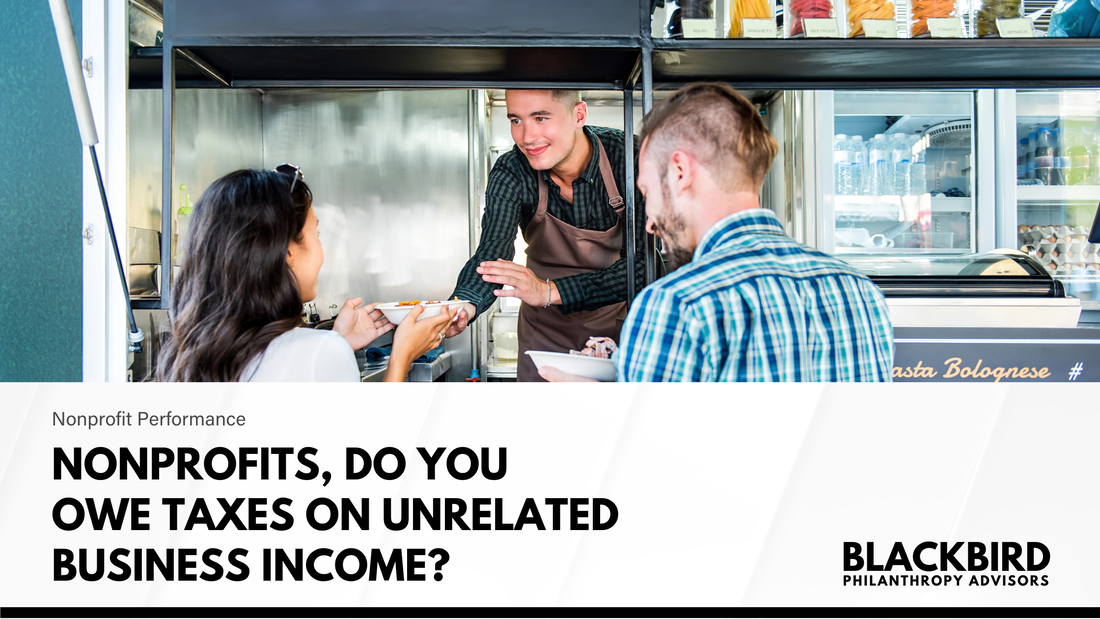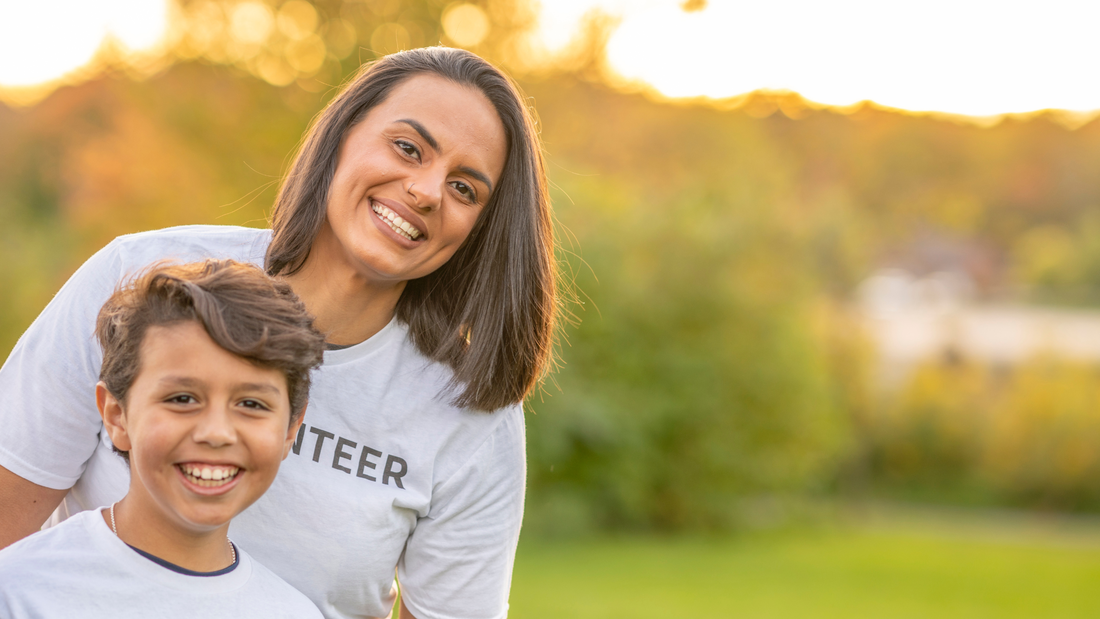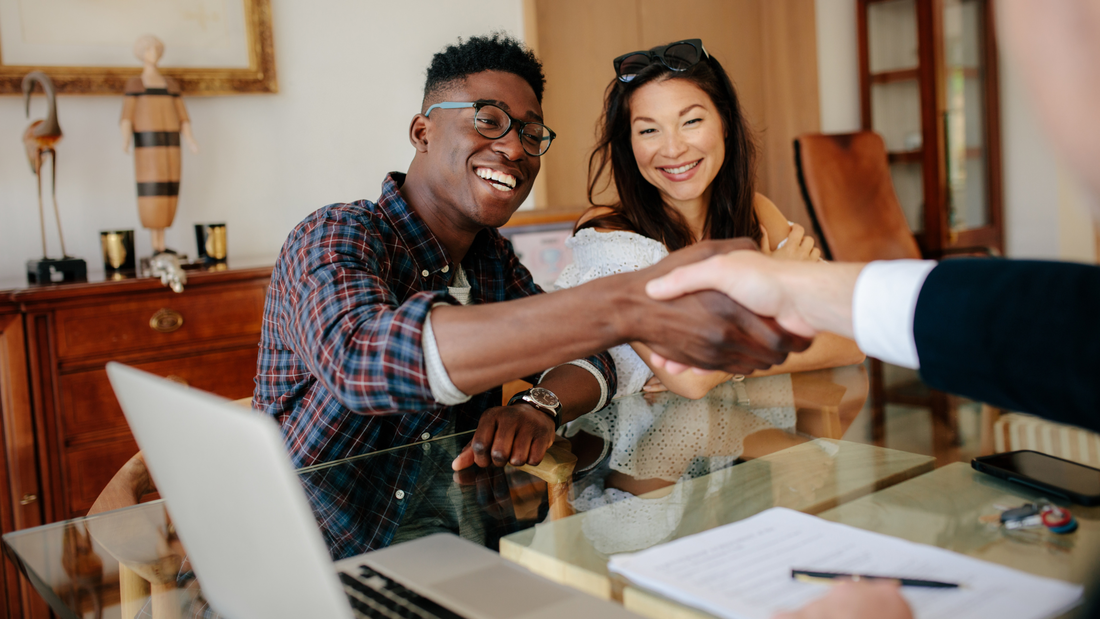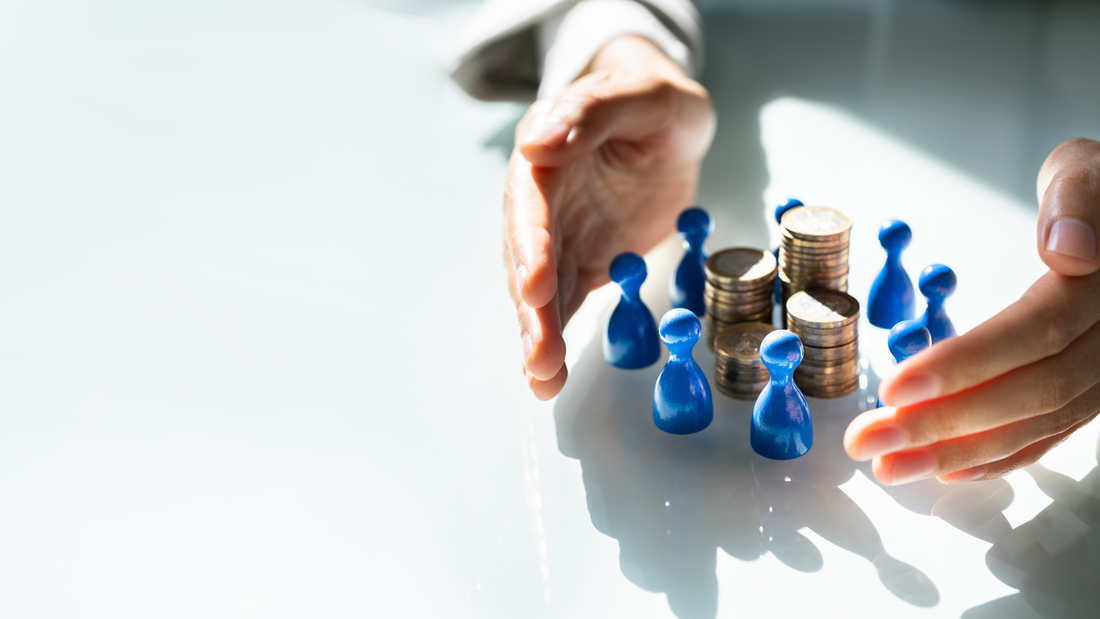Social Impact InsightsOur blog provides insights for social impact professionals in business and nonprofits. We offer advice on making the greatest impact in your organization by giving clear real-world advice on important topics of today.
|
|
The integration of AI, machine learning, quantum computing, cloud computing, and the Internet of Things into CSR strategies represents a forward-thinking approach to corporate philanthropy. These technologies offer new ways to enhance social responsibility, enabling companies to not only contribute positively to society and the environment but also lead in innovative and responsible business practices. In leveraging these technologies, companies can transcend traditional boundaries of CSR, paving the way for a more connected, sustainable, and socially responsible future. Implementing a Technology-Driven CSR Strategy
The integration of corporate social responsibility (CSR), environmental, social, and corporate governance (ESG), and community investment with advanced technologies like AI, machine learning, quantum computing, cloud computing, and the Internet of Things (IoT) is not just innovative but essential. Understanding these technologies and their applications can profoundly amplify a company's impact on society and the environment. Here's an expanded exploration of these technologies and their practical, impactful applications. #1: AI and Machine Learning: Tailoring CSR with Intelligence Understanding AI and ML: AI involves creating computer systems capable of performing tasks that typically require human intelligence. Machine Learning, a subset of AI, focuses on algorithms that learn and improve from experience. Relevance for Businesses: AI and ML can process vast data, enabling more informed, targeted CSR strategies. Practical Applications:
#2: Quantum Computing: Tackling CSR Complexity with Speed What is Quantum Computing: It utilizes principles of quantum mechanics to process information much faster than traditional computing. Business Relevance: Ideal for processing complex data, it's invaluable in developing efficient and impactful CSR strategies. Applications in CSR:
#3: Cloud Computing: Enhancing CSR Collaboration and Transparency Understanding Cloud Computing: This technology involves delivering various services over the internet, including data storage and networking. Why It's Important: It offers scalability and accessibility, crucial for collaborative CSR efforts. Practical Uses:
#4: The Internet of Things (IoT): Connecting CSR to the Digital World What is IoT: The Internet of Things refers to the network of physical objects ("things") embedded with sensors, software, and other technologies for the purpose of connecting and exchanging data with other devices and systems over the internet. Relevance for CSR: IoT can provide real-time data and connectivity, enhancing the efficiency and effectiveness of CSR initiatives. Innovative Applications:
0 Comments
The key to sustainable success in nonprofit fundraising often lies not just in the funds raised but in the relationships cultivated. As Caitlin Smith, Managing Director at Blackbird Philanthropy Advisors, aptly puts it, “Nonprofits are usually pretty great about talking about how wonderful they are but all the credit really needs to go to the donors who make it possible.” She strongly believes in the importance of giving your donors opportunities to be showered in gratitude. These opportunities will make sure more closely bonded with your nonprofit mission.
Transforming your relationship with donors from transactional to transformational is the cornerstone of long-term success in the nonprofit world. By implementing strategies that engage donors beyond financial asks, we forge partnerships that extend far beyond a single contribution. As we integrate donors into the fabric of our missions, we build a community of dedicated supporters, eager to see the change they believe in come to fruition. Build Bridges, Not Just Transactions This perspective shifts the focus from transactional encounters to forming meaningful connections. The essence of lifelong donor engagement lies in recognizing donors as integral parts of your mission. It's all about "engaging your donors and creating opportunity to engage new people to become donors," as Smith emphasizes, “You want to work on building bridges, not just transactions.” This engagement goes beyond mere appreciation, it's about bringing donors into the heart of what you do. Treat Donors Like Gold Remember, as Smith says, “You need to be treating your donors like gold! That goes a long way.” This golden treatment isn’t just about courtesy, it’s about genuinely valuing each donor's role in your mission. It’s about creating a culture of gratitude and involvement that resonates through every interaction. The Ripple Effect of Deep Engagement The benefits of deeply engaging donors are endless. Not only does it increase the likelihood of continued support, but engaged donors often become advocates for your cause and will actively extend their impact beyond financial contributions. They share their experiences, draw in their networks, and contribute to a stronger community rallying around your mission. 10 Ideas for Engaging Donors in Your Mission Nonproifit executives and fundraising professionals, you may be wondering how do we create opportunities for engaging donors beyond just asking them for money? How do we treat our donors like gold and involve them more closely in our missions? Here’s some general strategies that you can implement right away. 1. Donor-Involved Programs: Create programs or projects where donors can participate or volunteer. This direct involvement fosters a deeper connection with your cause. Even if you have a nonprofit that doesn’t allow for direct volunteers services, involve them in administrative tasks, event work, or ask them to join committees. 2. Impact Reporting: Regularly communicate the tangible impacts of donations, showing how every dollar is contributing to the mission. This transparency builds trust and a sense of partnership. 93% of the world’s largest company publish an annual report, is your organization? Blackbird Philanthropy Advisors can work with you to create a custom plan to get your impact story in the hands of your donors. 3. Donor Recognition Events: Host events dedicated to acknowledging and thanking your donors. Make these events about them, celebrating their contributions to your cause. Just being invited to one of these special events can make your donor feel valued. 4. Personalized Communication: Tailor your communication to show donors that you recognize their unique contributions. Personal thank you notes, updates on projects they are particularly interested in, or even acknowledging anniversaries of their support can make a big difference. Show an interest in your donor’s lives and take note to find meaningful connections. 5. Feedback and Advisory Roles: Invite donors to provide feedback or play advisory roles in certain projects. This involvement can make them feel valued and heard, deepening their commitment to your organization. Official Board of Directors boards do not have to be the only board at your nonprofit. For example, if you’re a youth serving organization, consider starting a youth or young adult advisory board. 6. Exclusive Content or Experiences: Offer donors exclusive insights into your work, like behind-the-scenes tours, webinars with key team members, or reports on upcoming projects. Do what you can to get them in the door at your nonprofit and they will feel more connected to your mission. 7. Donor Spotlights: Feature stories of donors in your newsletters, e-newsletters, social media, or on your website. This not only celebrates them but also shows potential donors the kind of community they could be joining. 8. Collaborative Projects: Invite donors to collaborate on specific projects or initiatives. This could range from brainstorming sessions to helping design a community program. Consider that many donors have special interests or talents that go beyond opening their wallet. Some donors may enjoy painting, others may enjoy baking or cleaning, and some may have a special interest in teaching a skill your clients could benefit from. The closer you are to understanding your donor’s interests, the more you will be able to connect them to yours. 9. Educational Opportunities: Provide educational sessions or materials about the issues your nonprofit addresses. Knowledge deepens engagement and commitment. Education they recieve at lunch'n'learns, webinars, tours, and workshops will give them tools to spread the good news about your mission and inviate others to supporters. 10. Social Media Engagement: Use social media to create a community around your cause, highlighting donor contributions and creating spaces for interaction. Remember, not all donors use all social media platforms. You’ll need to find ways to vary your messages to reach donors wherever they prefer to receive their news.This can be a lot of work, but it is worth it. 100 Ways to Engage Your Donors and Volunteers in your Nonprofit Mission Throughout the Year12/6/2023 Engaging donors is vital for building trust and securing future funding for nonprofits. This engagement creates a meaningful relationship beyond mere transactions, making donors feel valued and connected to the cause. By acknowledging their contributions and involving them in the mission, nonprofits foster a sense of community and partnership. This personalized approach deepens trust, showing donors that their support truly makes a difference. As trust grows, so does the likelihood of continued and increased donations. Engaged donors are more likely to become long-term supporters and advocates, spreading awareness and attracting more funding, thus fueling the nonprofit's ability to make a greater impact.
As the year draws to a close, it's a pivotal time for corporate donors to reflect on their philanthropic journeys. At Blackbird Philanthropy Advisors, we emphasize the importance of this period not just for reviewing past contributions but for strategizing future engagements. A key aspect of this process involves assessing relationships with nonprofit partners and planning giving priorities and employee engagement activities for the upcoming year. Our blog post below provides examples to demonstrate how corporations can apply these key points in real-life scenarios, creating a meaningful and strategic approach to corporate philanthropy. Evaluating Nonprofit Partnerships
Planning Giving Priorities
Enhancing Employee Engagement
Looking Ahead
The end of the year is more than just a time for reflection; it's an opportunity to strategize and set intentions for meaningful philanthropy. At Blackbird Philanthropy Advisors, we believe in the power of thoughtful planning and the impact it can have on both corporations and communities. As you assess your nonprofit relationships and plan for the upcoming year, remember that your corporate philanthropy is not just about giving back — it's about moving forward together. Annual reports often fly under the radar, overshadowed by the glitz and glamour of flashy marketing campaigns and product launches. However, these documents play a crucial role in providing transparency, accountability, and recognition to both businesses and nonprofit organizations. In this blog, we will delve into the world of annual reports, exploring their effectiveness in two distinct realms: the corporate sector and the nonprofit world. We will also highlight the key components of a well-structured annual report and offer advice on when and where to publish it, ultimately demonstrating why annual reports are indispensable. Annual Reports for Businesses: Celebrating Achievements and Nurturing Relationships
Nonprofit Annual Reports: Recognizing Donors and Impacting Lives
Key Components of an Effective Annual Report Regardless of whether it's a business or nonprofit annual report, the following components should be included:
When and Where to Publish an Annual Report Timing is crucial when it comes to publishing annual reports:
As for the distribution channels:
The Invaluable Role of Annual Reports Annual reports are not mere paperwork but powerful tools for businesses and nonprofit organizations. They offer a comprehensive overview of an entity's performance, achievements, and impact. Beyond numbers, annual reports help nurture relationships, build trust, and inspire confidence among stakeholders. When crafted thoughtfully and distributed strategically, they become invaluable assets in achieving an organization's goals and demonstrating its commitment to transparency and success. So, whether you're a business aiming to strengthen employee relations or a nonprofit seeking to recognize donors, invest in creating an impactful annual report—it's a decision that will undoubtedly pay dividends in the long run. Contact Blackbird Philanthropy Advisors to manage your Annual Report project today. Our services include full project management, copywriting, interviews, editing, design, and distribution. Starting a new business is like planting a seed of potential. As an entrepreneur, you have a vision, a product or service to offer, and the drive to succeed. But beyond the quest for profit lies an incredible opportunity—to create a positive social impact on your community and, potentially, the world. In today's dynamic business landscape, consumers and investors alike are increasingly drawn to businesses that not only aim to turn a profit but also actively participate in making the world a better place. According to a Cone Communications study, 88% of consumers are more loyal to companies that support social or environmental issues. This shift toward socially responsible entrepreneurship has given rise to a movement where startups are becoming standout leaders in community engagement and social impact. Brand new startup small businesses can harness their entrepreneurial spirit and unique position to engage with their communities in meaningful ways. Here's how to get started! 1. Identify Your Social Impact Goals The first step for any startup aspiring to create social impact is to define clear social impact goals. What causes or issues align with your business's mission and values? Whether it's environmental sustainability, education, poverty alleviation, or another cause, identifying your purpose sets the foundation for your community engagement efforts. 2. Volunteer and Support Local Initiatives Start by actively participating in local initiatives. Join local volunteer groups, attend community events, and engage with nonprofit organizations that align with your chosen cause. By dedicating your time and resources to local projects, you establish a strong presence within your community and showcase your commitment to making a difference. Small businesses that engage with their local communities contribute significantly to local economic growth. According to the Small Business Administration, for every $100 spent at a local small business, $68 stays in the community. 3. Incorporate Social Responsibility into Business Practices Integrate social responsibility into your business operations from the start. Consider eco-friendly practices, ethical sourcing, and fair labor standards. Consumers increasingly prefer businesses that prioritize sustainability and ethical practices, making it a win-win for your startup. 66% of consumers in the 2020 Edelman Trust Barometer believe that companies can take actions that both increase profits and improve the economic and social conditions in their communities. 4. Collaborate with Nonprofits Partnering with nonprofit organizations allows your startup to amplify its impact. Collaborate on initiatives, sponsor events, or donate a portion of your profits to a cause you're passionate about. These partnerships not only support the community but also provide your startup with valuable exposure. 5. Engage Your Team in Giving Back Foster a culture of giving back among your employees. Encourage volunteer days, matching donations, or involvement in community service projects. Engaged employees who share your startup's commitment to social impact can become powerful advocates for your brand. Engaged employees are 87% less likely to leave their companies, as per Gallup. Companies that actively engage in corporate social responsibility (CSR) often report higher employee retention rates. 6. Leverage Digital Platforms for Social Good In today's digital age, startups have a unique opportunity to use their online presence for social impact. Share your social responsibility efforts on social media, create awareness campaigns, and encourage your online community to get involved. Your startup's online voice can inspire action and support for your chosen cause. A good reputation for social responsibility can boost a company's value. According to Deloitte, 76% of consumers believe companies should take a stand on important social issues, positively impacting their reputation. 7. Measure and Communicate Your Impact Track and measure the impact of your community engagement efforts. Use data and metrics to showcase the positive change your startup is making. Share these achievements through blogs, social media, and annual reports to inspire others and build trust with your audience. Starting a new business is not just about profits; it's also an opportunity to create a lasting, positive impact on your community and the world. By prioritizing community engagement and social responsibility from the beginning, your startup can stand out, inspire others, and contribute to making the world a better place. Remember, small actions can lead to significant change, and your startup can be at the forefront of that change. When it comes to enhancing workplace dynamics and employee satisfaction, one area where data consistently supports positive outcomes is employee engagement. Engaged employees are more productive, less likely to turnover, and contribute significantly to a positive workplace culture. An effective strategy that is backed by robust metrics and research to boost employee engagement is workplace volunteerism. In this blog post, we'll delve into how encouraging employees to give back to the community can have a profound impact on your workforce and provide data-driven insights into its significance. Employee engagement is more importan than ever when it comes to attracting and retaining talent.
Encouraging volunteerism in the workplace is a proven tool to improve employee engagement.
Take steps to implement workplace volunteerism in your company.
Data-driven workplace volunteerism is not just a feel-good initiative; it's a potent tool for boosting employee engagement. By aligning your efforts with concrete metrics and research supporting the importance of both engagement and volunteerism, you can create a more engaged, motivated, and socially responsible workforce. Commence your journey toward a data-backed, purpose-driven workplace today, and witness the remarkable positive impact it brings, both within your organization and in the broader community. In today's socially conscious world, businesses, regardless of their size, are increasingly expected to give back to their communities. While larger corporations may have substantial resources to dedicate to philanthropic endeavors, small companies can also make a significant impact without straining their finances. 1. Skill-Based Volunteering One of the most budget-friendly ways for small companies to give back is by offering their employees' skills and expertise to local nonprofits. Whether it's graphic design, marketing, web development, or legal advice, these skills can be invaluable to organizations that might not have the resources to hire professionals. Small companies can organize skill-based volunteering programs where employees dedicate a certain number of hours each month to help nonprofits in their areas of expertise. This not only benefits the community but also boosts employee morale and skill development. 2. Donation Matching Small businesses can encourage their employees to contribute to charitable causes by implementing donation matching programs. In this setup, the company matches employee donations to selected charities or causes, effectively doubling the impact of their employees' generosity. This encourages a culture of giving within the company and demonstrates a commitment to social responsibility. 3. Host Community Events Hosting community events is an excellent way for small companies to engage with their local communities. These events need not be extravagant or expensive. Simple initiatives like organizing charity walks, clean-up days, or educational workshops can bring people together and create a sense of unity and goodwill. Small businesses can also collaborate with other local businesses to share the costs of such events, making them even more cost-effective. 4. In-Kind Donations Instead of cash donations, small companies can consider making in-kind donations. This involves donating goods or services that the business already produces or offers. For example, a local bakery can donate surplus baked goods to a homeless shelter, or a marketing agency can provide pro-bono services to a nonprofit organization. In-kind donations not only reduce costs but also allow small companies to leverage their unique strengths and resources for the benefit of the community. 5. Employee Volunteer Days Allowing employees to take paid time off for volunteer work is a win-win for both the company and the community. Small businesses can offer a certain number of paid volunteer days each year, encouraging their staff to actively participate in community service. This not only promotes a culture of giving but also provides employees with a meaningful way to contribute to their communities without financial burdens. 6. Cause-Related Marketing Small companies can engage in cause-related marketing campaigns that tie their products or services to a charitable cause. For example, they can pledge to donate a percentage of their sales for a specific period to a local charity. This not only raises funds for the cause but also enhances the company's reputation and customer loyalty. 7. Mentoring and Internship Programs Small businesses can support the development of their communities by offering mentoring and internship programs to local students and aspiring professionals. This provides valuable learning opportunities for young individuals while fostering a sense of community engagement. Small companies don't need massive budgets to give back to their communities effectively. By getting creative and considering the resources they already have, they can make a meaningful impact while aligning their business goals with social responsibility. Whether through skill-based volunteering, donation matching, community events, in-kind donations, employee volunteer days, cause-related marketing, or mentoring programs, small businesses can contribute to their communities without straining their finances, ultimately creating a positive ripple effect that benefits everyone involved. Giving back is not just for the big players; it's an opportunity for every business, no matter how small, to make a difference. In today's rapidly changing business environment, success encompasses more than financial gains and market leadership. An increasing number of companies are recognizing the transformative influence of giving back to the communities they serve. Engaging in volunteerism and community service not only nurtures positive societal change but also offers a multitude of advantages for businesses themselves. From elevated employee morale to a bolstered brand reputation, corporate social responsibility has become a fundamental aspect of modern business practices. Let's delve into the reasons and methods behind promoting volunteerism and community service, creating a substantial impact within the corporate workplace. The Significance of Volunteerism: Why It Matters
Strategies to Promote Volunteerism in the Corporate Workplace
Promoting volunteerism and community service within the corporate workplace is an endeavor that yields positive outcomes for all parties involved. It enhances employee engagement, fortifies company culture, and uplifts communities, all while enhancing the brand's reputation. By embracing the ethos of giving back, companies contribute to positive change and embody the values of compassion, empathy, and responsibility. As we navigate the ever-evolving business landscape, let's remember that success is not solely measured in profits, but in the constructive impact we leave on the world around us. In today's fast-paced business world, there's a notable shift in what employees seek from their jobs. Gone are the days when a paycheck and a corner office were the only aspirations. Today's workforce, particularly the younger generation, is more driven by purpose than ever before. They're not just seeking employment; they're searching for engagement, meaning, and a tangible connection between their work and the wider world. This is where the powerful duo of employee engagement and social impact comes into play. Employee Engagement is More Than Just Job Satisfaction Employee engagement refers to an employee's emotional commitment and attachment to their work and their organization. Engaged employees aren't just satisfied. They're motivated, involved, and passionate. They invest their best efforts into the job because they believe in the organization's mission and value their role in achieving it. While there are numerous strategies to foster this engagement, integrating social impact initiatives has emerged as one of the most effective methods. When employees feel their work has a broader social or environmental impact, their engagement levels often soar. Social Impact Goes Beyond Corporate Social Responsibility (CSR) Many companies have CSR programs, but social impact goes beyond just having a yearly charity drive or occasional community service day. It involves integrating societal and environmental considerations into the core business strategy and operations. It's about making a meaningful difference while achieving business goals. When employees see their company taking concrete steps to address social challenges, it amplifies their sense of purpose. They no longer perceive their roles as limited to their job descriptions; they become part of a larger narrative of positive change. The Top 4 Benefits of Combining Employee Engagement and Social Impact
5 Ways to Implement Social Impact Initiatives for Engagement
In today's socially-conscious world, businesses are no longer solely judged by their financial success. Stakeholders, customers, and employees increasingly demand transparency and accountability from the companies they engage with. As a result, the need for a Corporate Impact Page has emerged as an essential element of a company's online presence. This dedicated page serves as a platform to showcase the organization's commitment to social responsibility, environmental stewardship, and ethical practices. In this blog post, we explore the reasons why every company should have a Corporate Impact Page and provide a comprehensive list of what it should include. Why Every Company Needs a Corporate Impact Page:
What to Include on Your Corporate Impact Page:
By incorporating these essential elements into your Corporate Impact Page, your company can confidently showcase its dedication to making a positive difference in the world. In addition to their broader business practices, Small and Medium Sized Businesses (SMEs) can also make a significant impact by incorporating sustainability into their day-to-day office environment. This is a space where every employee can contribute and where sustainable habits can take root and spread beyond the workplace. Below are some ways in which businesses can foster sustainability in their local office settings. Reduce, Reuse, and Recycle This fundamental tenet of sustainability can be put into practice in numerous ways. Businesses can encourage employees to reduce waste by implementing digital solutions to minimize paper use. Existing materials can be reused wherever possible, such as repurposing old equipment or furniture instead of buying new. Furthermore, offices should have accessible recycling bins, and businesses can go a step further by implementing composting for organic waste. Energy Efficiency Energy usage is another area where SMEs can make significant sustainability strides. Using energy-efficient appliances and lighting, encouraging employees to turn off equipment when not in use, and making use of natural light where possible can all reduce an office's energy footprint. Additionally, more companies are opting to source their energy from renewable providers, further lowering their environmental impact. Sustainable Commuting Encouraging sustainable commuting options is another effective strategy. SMEs can facilitate carpooling, incentivize the use of public transportation, or install bike racks to encourage cycling to work. For businesses with the flexibility to do so, remote work not only reduces commuting-related emissions but can also lead to lower energy usage within the office. Green Spaces Incorporating green spaces in the office not only contributes to employee wellbeing but can also support local biodiversity. Whether it's potted plants in the office, a rooftop garden, or dedicating space for an outdoor green area, these small initiatives can make a significant difference. Educating and Involving Employees Lastly, education is key. Regular workshops or training sessions about sustainability can empower employees to take initiative, both within the workplace and in their personal lives. Businesses can also encourage employees to participate in sustainability planning and decision-making processes, creating a culture of ownership and responsibility towards sustainability. By implementing these practices, SMEs can demonstrate that a commitment to sustainability isn't just about grand gestures; it's also about the small, everyday choices that add up to a larger, more significant impact. Many people wonder if they could afford to hire a nonprofit performance consultant. Our answer is simple in many cases: you can't afford not to. Do you want to be the best leader possible? Do you need an extra pair of hands? Do you need temporary support? Do you want to spend all of your energy working toward you mission? Would you like to improve in areas where you feel you face more challenges? These are all good reasons to hire a consultant. Running a nonprofit organization requires expertise across various domains, and sometimes seeking assistance from a nonprofit consultant becomes essential. However, understanding the costs involved in hiring a nonprofit consultant can be challenging. In this blog post, we will explore the typical costs associated with different services offered by nonprofit consultants, whether it's fundraising coaching, event management, strategic planning, or other essential areas. Fundraising Coaching: Fundraising coaching typically involves guiding nonprofits in developing effective fundraising strategies, donor cultivation, and campaign planning. Costs for fundraising coaching can vary depending on the experience and reputation of the consultant. On average, expect to pay a flat fee of $1,500 to $5,000 per month or an hourly rate ranging from $100 to $350. Special Events Management: For managing special events such as galas, auctions, or benefit concerts, nonprofit consultants can assist with planning, logistics, and execution. Flat fees for special events management can range from $3,000 to $10,000, while an hourly rate may fall between $75 and $250. Marketing Communications: Nonprofit consultants can help develop marketing strategies, branding initiatives, and communication plans to increase visibility and engagement. Typical costs for marketing communications range from $2,000 to $8,000 per month as a flat fee, or an hourly rate of $75 to $300. Website Development: When hiring a nonprofit consultant for website development, costs can vary depending on the complexity of the website, desired features, and customization requirements. Typically, consultants charge a flat fee ranging from $3,000 to $25,000 or more, depending on the scope of the project and ongoing maintenance needs. Fundraising Appeal Writing: Crafting compelling fundraising appeals requires expertise in storytelling and persuasive writing. The costs for fundraising appeal writing can be estimated at $500 to $2,500 per appeal, depending on the complexity and length. Performance based bonuses including percentage-based commissions, tiered incentives, or discretionary bonuses based on overall fundraising success may be part of the contract. Capital Campaign Management: Capital campaigns involve significant fundraising efforts for large-scale projects. Nonprofit consultants overseeing capital campaigns usually charge a percentage of the funds raised, typically ranging from 5% to 10%. Performance based bonuses including percentage-based commissions, tiered incentives, or discretionary bonuses based on overall fundraising success may be part of the contract. Grantwriting: Grantwriting involves researching, preparing, and submitting grant proposals to secure funding from foundations and grant-making organizations. Consultants may charge a flat fee per grant proposal, ranging from $1,000 to $5,000, or an hourly rate between $75 and $150. Performance based bonuses including percentage-based commissions, tiered incentives, or discretionary bonuses based on overall fundraising success may be part of the contract. 501c3 Formation: For organizations seeking assistance in forming a 501c3 nonprofit status, consultants can help with legal and administrative processes. Flat fees for 501c3 formation services can range from $2,000 to $10,000, depending on the complexity of the organization. General Nonprofit Administration Consulting: Consultants providing general nonprofit administration guidance offer expertise in governance, policies, procedures, and organizational structure. Costs for general nonprofit administration consulting may range from $100 to $400 per hour, or a flat fee based on the scope and duration of the project. Strategic Planning: Strategic planning consultants assist in developing long-term goals, objectives, and strategies for nonprofits. Costs for strategic planning services can vary widely, depending on the organization's size and complexity. Expect flat fees in the range of $5,000 to $20,000 or hourly rates between $150 and $500. Human Resources Management: Nonprofit consultants specializing in human resources can provide guidance on recruitment, performance management, policies, and compliance. Costs for HR management consulting may range from $100 to $300 per hour, or a flat fee based on the scope of work. Outsourced Bookkeeping: Outsourcing bookkeeping services to a nonprofit consultant can streamline financial management and ensure accurate record-keeping. Costs for outsourced bookkeeping services vary based on the size and complexity of the organization's finances. Typically, consultants charge an hourly rate ranging from $50 to $300 or offer a monthly flat fee starting from $500 to $2,500, depending on the volume of transactions and reporting requirements. It's important to note that these cost ranges are approximate and can vary based on factors such as the consultant's experience, geographic location, and the specific needs of your nonprofit organization. When considering hiring a nonprofit consultant, it's crucial to discuss pricing structures, deliverables, and expected outcomes to ensure a clear understanding of the services provided and associated costs. A cheaper hourly rate consultant may not always be the best decision. Take for example an inexperienced grantwriter who charges $50 per hour may end up billing you for 40 hours ($2,000) for something an experienced writer, charging $200 per hour, may be able to accomplish in 10 hours of work ($2,000) with a higher quality output and fewer errors. Remember, investing in the expertise of a nonprofit consultant can yield significant benefits by improving efficiency, increasing revenue, and enhancing overall organizational effectiveness. Carefully evaluating the costs and aligning them with your nonprofit's budget and goals will help you make an informed decision and maximize the impact of the services provided by a nonprofit consultant. In a world where nonprofits play a crucial role in addressing various social issues, it's no surprise that they often approach companies and philanthropists for support. While the desire to contribute and make a difference is commendable, it's important to recognize that not every donation request can be fulfilled. Ethical decision-making entails setting boundaries and allocating resources effectively. In this blog post, we will explore the art of respectfully declining nonprofit donation requests while maintaining a spirit of collaboration and empathy. Prioritize Your Mission and Values: Before considering any donation request, it's vital for companies and philanthropists to evaluate their own mission and values. Aligning with causes that resonate with their core purpose enables more focused and impactful giving. When faced with a donation request that doesn't align, it becomes easier to respectfully decline while maintaining a genuine commitment to social change. Be Transparent and Communicative: When declining a donation request, transparency is key. Clearly articulate the reasons behind your decision, emphasizing that it is not a reflection of the nonprofit's value or worthiness. By openly communicating your perspective, you provide an opportunity for the nonprofit to understand your considerations and potentially explore alternative avenues for collaboration. Offer Alternative Support: Instead of simply saying "no," explore alternative ways to support the nonprofit. It could involve connecting them with other potential donors or partners who might have a stronger alignment with their mission. Providing guidance and resources can help the organization grow, even if you are unable to contribute financially at the moment. Consider Collaborative Opportunities: While declining a donation request, express interest in exploring future collaboration. This demonstrates that your decision is not based on a lack of support for their cause, but rather on current circumstances. Propose possibilities such as joint events, partnerships, or shared resources that could create a mutually beneficial relationship in the future. Encourage Long-Term Relationships: Even if you are unable to fulfill a particular request, nurturing long-term relationships with nonprofits can lead to more substantial impact over time. Communicate your willingness to engage with the organization on an ongoing basis, offering support in the form of mentorship, volunteerism, or sharing expertise. Building a network of collaborative relationships can generate positive change collectively. Maintain Privacy and Confidentiality: Respect the privacy of both your decision and the nonprofit's request. Avoid disclosing any confidential information that may have been shared during the donation solicitation process. Maintaining confidentiality ensures trust and preserves the integrity of your organization and the nonprofits you engage with. Respecting the boundaries of philanthropy is crucial to maintaining a sustainable and effective giving ecosystem. While it's not always possible to fulfill every donation request, companies and philanthropists can decline in a respectful manner that preserves relationships and fosters collaboration. By aligning donations with their mission, providing transparent communication, exploring alternative avenues of support, and nurturing long-term relationships, donors can continue to make a positive impact while maintaining ethical boundaries. Remember, it's not about saying "no" to a nonprofit; it's about finding the right opportunity to say "yes" to the causes that resonate most deeply with your purpose. Building a strong brand reputation through philanthropy can be a powerful strategy for small businesses. Here are some effective ways to utilize philanthropy to enhance your brand reputation:
Remember, building brand reputation through philanthropy is a long-term commitment. Consistency and authenticity are key. By genuinely integrating philanthropy into your business ethos and communicating your efforts effectively, you can build a strong brand reputation that resonates with your customers, differentiates your business from competitors, and enhances your market position. In today's highly competitive business landscape, small business owners are constantly seeking ways to differentiate themselves and enhance their market position. While traditional marketing strategies undoubtedly play a crucial role, incorporating philanthropy into your business model can provide a powerful boost. By aligning your business with a cause and actively participating in philanthropic initiatives, you not only make a positive impact on society but also strengthen your brand reputation and forge stronger connections with customers. Let's explore how philanthropy can be a game-changer for small businesses. Building Brand Reputation Philanthropy is an excellent avenue for small businesses to establish a positive brand reputation. By supporting a cause that aligns with your core values, you demonstrate your commitment to making a difference beyond profits. Engaging in philanthropy not only appeals to socially conscious customers but also generates goodwill among the wider community. Through targeted initiatives such as donations, volunteering, or cause-related marketing campaigns, you can create a lasting impression that fosters trust and loyalty, ultimately enhancing your market position. Creating Emotional Connections Philanthropy allows small businesses to connect with customers on a deeper, more emotional level. When people see a company actively involved in charitable activities, it evokes a sense of shared purpose and empathy. By communicating the impact of your philanthropic efforts through storytelling, social media, or public events, you can engage customers in a meaningful way. This emotional connection cultivates brand advocates who not only support your business but also spread positive word-of-mouth, strengthening your market position and attracting new customers. Differentiation and Competitive Advantage In a crowded marketplace, standing out from the competition is paramount. Philanthropy provides a unique opportunity for small businesses to differentiate themselves. By focusing on a cause that resonates with your target audience and crafting purpose-driven messaging, you distinguish your brand from others solely focused on profit. This differentiation acts as a powerful competitive advantage, attracting customers who share your values and are more likely to choose your products or services over those offered by your competitors. As a small business owner, incorporating philanthropy into your business strategy offers a myriad of benefits. From enhancing brand reputation and creating emotional connections to differentiating your brand and gaining a competitive edge, philanthropy provides a unique avenue to improve your market position. By leveraging the power of giving back, you can not only make a positive impact on society but also strengthen your business's bottom line in the process. Embrace philanthropy as a strategic tool and unlock its transformative potential for your small business. Fundraising is a vital aspect of nonprofit organizations, providing the necessary financial resources to support their mission and programs. Nonprofit leaders play a crucial role in driving successful fundraising efforts. To effectively navigate the complex and competitive landscape of fundraising, nonprofit leaders must possess a diverse set of skills. In this blog post, we will explore the key skills that nonprofit leaders need to succeed in fundraising and make a lasting impact on their organizations. 1. Relationship Building: One of the fundamental skills that nonprofit leaders need for successful fundraising is the ability to build and nurture relationships. Building strong relationships with donors, supporters, and stakeholders is crucial for cultivating trust, loyalty, and long-term engagement. Effective leaders invest time in getting to know their donors personally, understanding their motivations, and tailoring their fundraising strategies accordingly. They prioritize building genuine connections based on shared values and a common vision. 2. Communication and Storytelling: Effective communication is at the heart of successful fundraising. Nonprofit leaders must possess exceptional communication skills to convey their organization's mission, impact, and financial needs to potential donors and supporters. They should be able to craft compelling stories that evoke emotions and inspire action. By effectively communicating the importance of their cause and the impact of donor contributions, nonprofit leaders can create a sense of urgency and motivate individuals to support their organization financially. 3. Strategic Thinking: Fundraising requires strategic thinking and planning. Nonprofit leaders must be able to analyze the funding landscape, identify potential funding sources, and develop comprehensive fundraising strategies aligned with their organization's goals. They should be capable of identifying opportunities, anticipating challenges, and adapting their strategies to changing circumstances. Strategic thinking involves setting realistic fundraising targets, developing action plans, and evaluating the effectiveness of different fundraising initiatives. 4. Financial Management: A solid understanding of financial management is essential for nonprofit leaders involved in fundraising. They need to be knowledgeable about budgeting, forecasting, and financial reporting to ensure transparency and accountability to donors. Nonprofit leaders should have the ability to create and manage budgets, track financial performance, and demonstrate responsible stewardship of funds. By showcasing sound financial management practices, nonprofit leaders can instill confidence in potential donors and strengthen their fundraising efforts. 5. Networking and Collaboration: Nonprofit leaders need strong networking and collaboration skills to expand their reach and access a wider donor base. Building relationships with individuals, businesses, foundations, and other nonprofit organizations can lead to strategic partnerships, shared resources, and collaborative fundraising opportunities. Effective leaders actively engage in networking events, conferences, and community gatherings to establish connections and foster mutually beneficial relationships. By leveraging these networks and collaborations, nonprofit leaders can enhance their fundraising efforts and create a larger impact. 6. Data Analysis and Evaluation: Nonprofit leaders must have the ability to analyze data and evaluate the success of their fundraising strategies. They should be comfortable working with fundraising software and tools to track donor contributions, measure campaign effectiveness, and identify trends and patterns. By leveraging data-driven insights, nonprofit leaders can make informed decisions, refine their fundraising approaches, and optimize their efforts for better results. Fundraising is a critical aspect of nonprofit leadership, and mastering the necessary skills is key to achieving success. Nonprofit leaders who possess strong relationship building, communication, strategic thinking, financial management, networking, and data analysis skills are better equipped to navigate the challenges of fundraising. By continuously honing these skills, nonprofit leaders can inspire donors, mobilize resources, and make a significant impact on their organizations and the communities they serve. Hiring a contractor or consultant to perform work for your company or organization could result in significant cost savings while also providing a high level of expertise you may not be able to afford otherwise. The cost savings associated with hiring a consultant versus a permanent staff member can vary depending on several factors such as the level of expertise required, the length of the project, and the specific scope of work. Here are some potential cost savings that organizations may experience by hiring a consultant rather than a permanent staff member: Lower Overhead Costs:
Reduced Hiring Costs:
Hiring a consultant instead of a permanent staff member can provide significant cost savings for organizations, particularly for short-term or specialized projects. However, it is important to carefully evaluate the costs and benefits of each option before making a decision.
As a nonprofit organization, you may be familiar with the concept of tax-exempt status. However, it's important to understand that there are some types of income that are not exempt from taxes, known as unrelated business income (UBI) tax.
What is Unrelated Business Income Tax? Unrelated business income tax is a tax on income that is earned by a nonprofit organization through a trade or business that is not related to the organization's primary exempt purpose. The purpose of this tax is to prevent nonprofit organizations from using their tax-exempt status to gain an unfair advantage over for-profit businesses. Examples of Unrelated Business Income Here are fifteen types of income that may qualify as unrelated business income:
Reporting Unrelated Business Income Tax Nonprofit organizations that earn unrelated business income are required to report it on Form 990-T, also known as the Exempt Organization Business Income Tax Return. The organization must file this form if it has gross income of $1,000 or more from unrelated business activities. In addition to reporting the income, the organization must also calculate and pay any taxes owed on this income. The tax rate for unrelated business income varies depending on the amount of income earned, but it generally ranges from 21% to 28%. It's important for nonprofit organizations to understand their obligations when it comes to unrelated business income tax. Failing to report or pay taxes on unrelated business income can result in penalties and potential loss of tax-exempt status. Consequences of Not Reporting UBI If a nonprofit fails to file Form 990-T to report their unrelated business income tax (UBIT), they may face penalties and potential loss of tax-exempt status. The penalty for failing to file Form 990-T is $20 per day, up to a maximum of $10,000 or 5% of the organization's gross receipts, whichever is less. Additionally, if the IRS determines that the failure to file was willful, the penalty increases to $1,000 per day, up to a maximum of $50,000. In addition to penalties, failing to report UBIT can also jeopardize a nonprofit's tax-exempt status. If the IRS determines that a nonprofit is engaged in a substantial amount of unrelated business activity and has not reported it, the organization may lose its tax-exempt status. Unrelated business income tax can be a complex topic for nonprofit organizations to navigate, but it's an important aspect of maintaining tax-exempt status and ensuring compliance with tax regulations. By understanding what types of income qualify as unrelated business income and how to report it, nonprofit organizations can protect their tax-exempt status and continue to serve their communities in a financially responsible manner. Corporate Social Responsibility (CSR) is everyone's job within a company. CSR initiatives should not be the sole responsibility of one department or individual within a company. Instead, CSR should be integrated into the company's culture and values, and all employees should be encouraged to contribute to CSR efforts in their own way.
All employees, from entry-level staff to executive leadership, can play a role in supporting CSR initiatives. This can include volunteering for community service events, participating in sustainability initiatives, reducing waste and energy consumption in the workplace, supporting diversity and inclusion initiatives, and advocating for ethical business practices. By involving all employees in CSR initiatives, companies can create a culture of social responsibility and sustainability, which can have a positive impact on both the community and the company's bottom line. Additionally, involving employees in CSR initiatives can increase employee engagement, job satisfaction, and retention, which can lead to a more committed and motivated workforce. CSR projects should be a collective effort involving various departments and people within a business. In practice, the following departments are typically most involved in implementing CSR initiatives:
Note: This article refers to Corporate Social Responsibility (CSR). CSR activities are also often referred to as Corporate Responsibility, ESG, Community Investment, Social Impact, and Community Relations. If you're an employer competing for top talent in your industry, you may want to consider creating a formal plan to encourage volunteer service among employees. Working somewhere that encourages volunteer service can be important for several reasons.
As more and more companies recognize the importance of social responsibility and community involvement, many are turning to volunteer service programs as a way to give back and make a positive impact. However, simply encouraging employees to volunteer on their own time may not be enough to create a meaningful impact. To truly make a difference, companies need to develop a formal plan to encourage and support employee volunteer service. Here are some reasons why your company needs a formal volunteer service plan:
A formal volunteer service plan can provide numerous benefits to both employees and companies. By supporting and encouraging employee volunteer service, companies can improve employee engagement, build a positive reputation, support local communities, improve employee skillsets, and enhance corporate social responsibility. If your company has not yet developed a formal volunteer service plan, now is the time to do so and make a meaningful impact. Businesses partnering with nonprofits can be a win-win situation. Nonprofits can benefit from increased exposure and access to resources, while businesses can benefit from improved reputation, customer loyalty, and employee morale. However, not all partnerships are created equal. Businesses need to carefully consider several factors when choosing a nonprofit partner to ensure a successful and meaningful partnership.
But with so many nonprofits out there, how do you choose the right one to partner with? With these factors in mind, you can create a successful partnership that benefits both your business and the nonprofit you choose to partner with. 1. Values Alignment First and foremost, businesses should choose a nonprofit that aligns with their values and mission. A partnership should be mutually beneficial, so it's important to find a nonprofit that shares similar goals and values. For example, a business that prioritizes environmental sustainability may want to partner with an environmental nonprofit, while a business that prioritizes education may want to partner with an education-focused nonprofit. If the nonprofit's mission doesn't align with your business's values and goals, the partnership may not be as effective as it could be. Take the time to research the nonprofit's mission statement and programs to ensure that they align with your business's values and goals. 2. Due Diligence Once a potential nonprofit partner has been identified, businesses should research the organization thoroughly. This includes reviewing their mission statement, financial statements, and impact reports. Businesses should ensure that the nonprofit is reputable, transparent, and well-run. This due diligence is crucial to avoid any red flags, such as a nonprofit with a history of mismanagement or unethical practices. 3. Track Record Another important consideration is the nonprofit's impact and reach. Businesses should assess the nonprofit's ability to make a meaningful difference in the community or cause they support. This can include reviewing the nonprofit's track record of success and their plans for the future. How effective is the nonprofit at achieving its goals? What kind of impact has it had on the community it serves? Look for nonprofits that have a track record of success and can demonstrate the impact their programs have had. Businesses should also consider the nonprofit's reach and visibility. A nonprofit with a large and engaged following can help increase the business's exposure and reputation. 4. Clear Expectations In addition to impact and reach, businesses should consider the logistics of the partnership. This includes determining the scope of the partnership, setting clear goals and expectations, and establishing a timeline. Businesses should also consider the resources they are willing to allocate to the partnership, such as financial support, in-kind donations, or employee volunteer time. It's important to establish clear communication and expectations upfront to avoid misunderstandings or misaligned goals down the road. 5. Transparency Transparency is key when it comes to nonprofit partnerships. Make sure the nonprofit you partner with is transparent about its finances, how donations are used, and the impact its programs have had. Transparency builds trust with customers and can help ensure that the partnership is successful. 6. Plan Ahead Businesses should prioritize building a strong relationship with their nonprofit partner. This means investing time and effort into getting to know the nonprofit's leadership and staff, understanding their needs and challenges, and finding ways to support them beyond financial donations. Building a strong relationship can lead to a more impactful partnership and can also help improve the business's reputation and employee morale. 7. Collaboration Successful partnerships require collaboration. Look for a nonprofit that is willing to work with your business to create a mutually beneficial partnership. The nonprofit should be open to your ideas and suggestions and willing to work with you to achieve your shared goals. 8. Red Flags While there are many great nonprofits to partner with, there are also some red flags to watch out for. Here are some things to avoid when choosing a nonprofit partner:
Partnering with a nonprofit can be a powerful way for businesses to give back to their community, improve their reputation, and boost employee morale. However, it's important to choose a nonprofit partner carefully and thoughtfully. Businesses should prioritize finding a nonprofit that aligns with their values and mission, has a proven track record of impact and reach, and is well-run and transparent. Be sure to watch out for red flags like lack of transparency, lack of impact, lack of collaboration, and controversial programs. By building a strong and meaningful partnership, businesses and nonprofits can work together to make a positive difference in the world. Philanthropy, the act of giving and supporting those in need, has been an important part of human society for centuries. In modern times, corporations have increasingly become involved in philanthropy, through charitable donations, community involvement, and other forms of social responsibility. Here are the top five reasons to invest in strategic philanthropy.
1. Investing in philanthropy can help corporations build a positive reputation and enhance their brand image. When a corporation supports a charitable cause, it shows that they care about more than just profits and are invested in the well-being of their community. This can lead to increased loyalty and trust from consumers, who are more likely to support a business that aligns with their values. In addition, it can also help attract and retain employees who are passionate about making a positive impact on society. 2. Philanthropy can benefit the community by addressing social issues and improving quality of life. Corporate philanthropy can take many forms, including donations to charities, community engagement initiatives, volunteer programs, and more. By supporting these efforts, corporations can help provide essential services to those in need, such as food, shelter, healthcare, education, and more. This can have a significant impact on improving the lives of individuals and families, especially in disadvantaged communities. 3. Investing in philanthropy can help corporations build relationships with stakeholders, including customers, employees, suppliers, and investors. By working together to address social issues, corporations can foster a sense of shared purpose and collaboration, which can lead to stronger relationships and increased trust. This can be especially important during times of crisis, as stakeholders are more likely to support and stand by a corporation that has shown a commitment to social responsibility. 4. Corporate philanthropy can help corporations improve their bottom line by increasing customer loyalty and sales. Studies have shown that consumers are more likely to support businesses that demonstrate a commitment to social responsibility, and are willing to pay more for products and services from these companies. This can lead to increased revenue and profits, which can then be reinvested in further philanthropic efforts. 5. Investing in philanthropy is simply the right thing to do. As members of society, corporations have a responsibility to use their resources and influence to help address social issues and improve quality of life for all. By investing in philanthropy, corporations can help create a more just and equitable society, where everyone has the opportunity to thrive. It is clear that investing in philanthropy is important for corporations, communities, and society as a whole. By demonstrating a commitment to social responsibility, corporations can build a positive reputation, benefit the community, build relationships with stakeholders, improve their bottom line, and make a positive impact on the world. As such, it is important for corporations to prioritize philanthropy as an essential part of their business strategy, and work to create a more just and equitable society for all. Choosing the right bank for a nonprofit organization is a crucial decision that can have a significant impact on the organization's financial stability and ability to achieve its mission. Nonprofit organizations may face several unique challenges when it comes to banking, such as difficulty accessing loans or lines of credit, limited options for fee-free banking, and the need to manage donor funds and maintain transparency and accountability. Additionally, nonprofit organizations often have fluctuating cash flows, which can make it challenging to maintain consistent account balances and avoid overdraft fees. With so many banks and financial institutions to choose from, it can be challenging to know where to start. In this blog post, we'll explore the key factors that nonprofits should consider when selecting a bank. 1. Mission Alignment The first and most critical factor to consider when selecting a bank for a nonprofit organization is mission alignment. The bank should share the nonprofit's values and mission, and be committed to supporting the organization's work. Nonprofits should look for banks that have a history of working with nonprofit organizations and have a track record of supporting causes that align with their mission. Because of the unique challenges related to banking for nonprofits, you will want to have a bank that has experience working with nonprofit entities. 2. Fees and Costs Nonprofits should be mindful of the fees and costs associated with banking services. Banks typically charge fees for various services, such as account maintenance, wire transfers, and ATM usage. These fees can add up quickly and eat into the organization's budget. Nonprofits should look for a bank that offers low or no-cost banking services or provides discounts for nonprofit organizations. 3. Accessibility and Convenience Accessibility and convenience are also critical factors to consider when selecting a bank for a nonprofit organization. Nonprofits should look for a bank that has a convenient location and offers online banking services, mobile banking, and payment processing. This will make it easier for the organization to manage its finances and access its funds when needed. If your nonprofit operates outside of your headquarters state, make sure executives can access the banking services from anywhere. 4. Customer Service Customer service is another essential factor to consider when selecting a bank for a nonprofit organization. Nonprofits should look for a bank that provides excellent customer service and is responsive to their needs. The bank should have a dedicated team that specializes in working with nonprofit organizations and understands the unique challenges they face. Consider the availability of customer service representatives and the responsiveness of the bank's support team. 5. Security and Fraud Protection Security and fraud protection are critical considerations for any organization, but they are especially important for nonprofits. Nonprofits should look for a bank that offers robust security features, such as two-factor authentication and fraud prevention tools. The bank should also have a system in place for quickly detecting and addressing any fraudulent activity. Ensure that the bank has robust security measures in place to protect your funds and investments from fraud or cyberattacks. Ask about their policies for data protection, encryption, and fraud prevention. Of course, you will also need to verify that the bank is FDIC insured, which means that your funds are protected up to $250,000 in case the bank fails. 6. Interest Rates and Investment Opportunities Nonprofits should consider the interest rates and investment opportunities offered by the bank. Nonprofits should look for a bank that offers competitive interest rates on its deposit accounts and provides investment opportunities that align with the organization's financial goals. 7. Reputation It's important to choose a bank with a good reputation and a history of stability and reliability. Look for a bank with positive reviews and feedback from other nonprofits or businesses, and consider their track record of financial performance. Conduct due diligence and research potential banks thoroughly before making a decision. This can include reading reviews and ratings, comparing fees and services, and asking for recommendations from other nonprofits or trusted advisors. Selecting the right bank for a nonprofit organization requires careful consideration of several factors. Nonprofits should look for a bank that shares their values and mission, offers low or no-cost banking services, is accessible and convenient, provides excellent customer service, has robust security and fraud protection measures in place, and offers competitive interest rates and investment opportunities. By taking these factors into account, nonprofits can find a banking partner that will help them achieve their financial goals and further their mission. Nonprofit organizations have long struggled with finding the right talent for their entry-level positions. However, there is a growing pool of untapped talent that nonprofits can leverage: teenagers. By hiring youth workers, nonprofits can not only fill their entry-level roles but also enjoy a host of benefits. By investing in youth workers, nonprofits can build a stronger, more innovative, and more sustainable workforce. Of course, it is important for employers to understand and comply with these child labor laws to ensure the safety and well-being of their young employees. Employers should go above and beyond to protect the wellbeing of all employees. Child labor laws are just the bare minimum expectation of how a minor should be treated in the workplace. Benefits of Hiring Teenagers for the Employer
Benefits of Having a Job for the Teenage Workers Having a job in their youth can provide numerous benefits for teenagers, both in the short term and in the long term. In this research brief, we will explore these benefits in detail. Short term benefits:
Long term benefits:
It is important to note, however, that there are also potential downsides to teenagers having jobs. Working too many hours can lead to stress and burnout, and may interfere with academic performance. Additionally, some jobs may expose teenagers to hazardous or unsafe working conditions. Employers should follow all child labor laws when hiring a teenager and monitoring their safety and work conditions. Having a job in their youth can provide numerous benefits for teenagers, including money management skills, responsibility, time management skills, social skills, work experience, career readiness, financial independence, better academic performance, networking, and confidence. While there are potential downsides to working, the benefits outweigh the risks for most teenagers. Protecting Minors from Exploitation, Abuse, and Unsafe Working Conditions Child labor laws are in place to protect minors from exploitation, abuse, and unsafe working conditions. When hiring teenagers to work, employers must adhere to these laws to ensure the safety and well-being of their young employees. Here are some of the child labor laws that employers must follow:
|
 RSS Feed
RSS Feed
